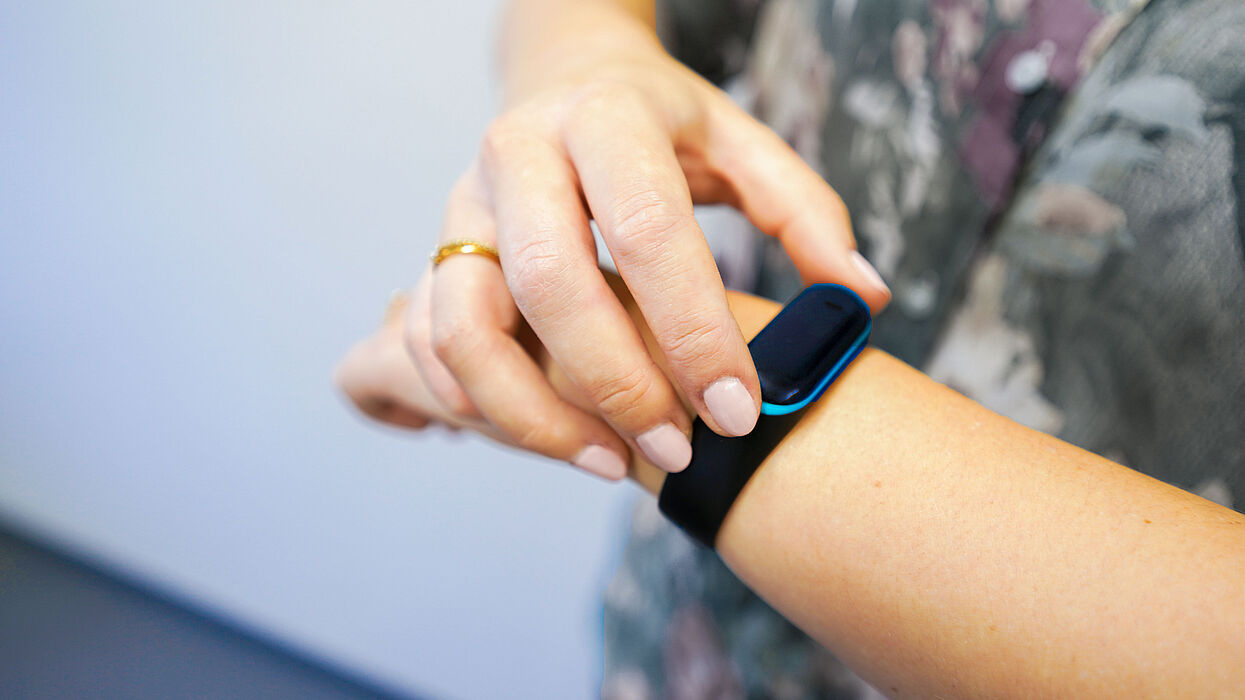Scientists from the University of Paderborn are awarded research prize
Epilepsy is a neurological disease that affects more than 50 million people worldwide. The main symptoms include severe seizures, often accompanied by unconsciousness and injury - in some cases even fatal. Although emergency medications and safety precautions exist, their use is massively hampered by the unpredictability of seizures. Scientists at the University of Paderborn are therefore working on a novel system for a wrist-worn device, a so-called wearable, that provides forecasts in real time. They have now been awarded the university's research prize for this work.
Current methods bring disadvantages
"The uncertainty of when the next seizure will occur is one of the most challenging aspects of the disease reported by people with epilepsy and their caregivers," explains Prof. Dr. Dr. Claus Reinsberger, neurologist and head of the Institute of Sports Medicine at the University of Paderborn. An effective real-time prediction system could save lives by improving treatment strategies and even preventing seizures in the future. Although there is already scientific work on various methods, these are usually accompanied by significant impairments: "Current systems are mostly based on invasive electroencephalography (EEG), in which small devices are implanted in the brains of the patients. According to recent studies, many suffer from severe side effects. This makes EEG rather unsuitable for widespread use in the general population, especially in children," says Reinsberger.
Improved quality of life for millions of people through new approach
Low-cost, easy-to-use, wearable devices that simultaneously collect various autonomic nervous system (ANS) data, such as heart rate, sweat activity and skin temperature, show promise and could improve the quality of life for millions of people. "Seizure prediction using wearables is an emerging field that has only recently seen scientific confirmation of feasibility. However, these techniques are limited to offline processing. So there is currently no solution that can predict seizures in real time and thus has the potential to initiate appropriate medical treatment," says Dr. Tanuj Hasija from the Institute of Electrical Engineering and Information Technology, who is implementing the project together with Reinsberger.
The Paderborn scientists want to change that. To achieve their goal, they are developing an algorithm and a platform prototype. Live data is collected by the wearable, processed by the algorithm and results in an alarm in the event of an increased probability of seizure. Boston Children's Hospital at Harvard Medical School is supporting the project.
Using multimodal learning with explainable artificial intelligence.
A major hurdle is finding biomarkers that distinguish between the so-called interictal period and the preictal period (not shortly or just before a seizure). "Current methods for offline seizure prediction either rely on preictal biomarkers from a single autonomic nervous system function or use entirely data-driven approaches, quasi highly complex black boxes with no interpretable explanations," Hasija said. However, the scientists' preliminary work has shown that preictal changes are linked to multiple ANS functions at once. The combined values could thus yield a reliable biomarker for seizure prediction.
In order to make the functioning of the algorithm understandable for the end users and their practitioners, the Paderborn researchers use explainable artificial intelligence. The prediction algorithm is supposed to learn together from different medical modalities and also provide explanations for its predictions. For example, it decides on a high seizure probability based on an unusual heart rate in combination with high sweat activity that is not related to factors such as physical activity or the like.
Challenges exist related to the diversity of ANS signals in different seizure types and individuals. "Nevertheless, successful real-time seizure prediction for even a fraction of patients* would lead to a paradigm shift in epilepsy treatment. Moreover, the combination of automated learning based on multiple data sources and explainable artificial intelligence is a unique approach that offers the potential for a trustworthy technique and a better understanding of seizure-related changes, and thus opportunities for new biomarkers for seizure prediction," the two scientists agree. They plan to make their results publicly available to support future studies, among other things.


